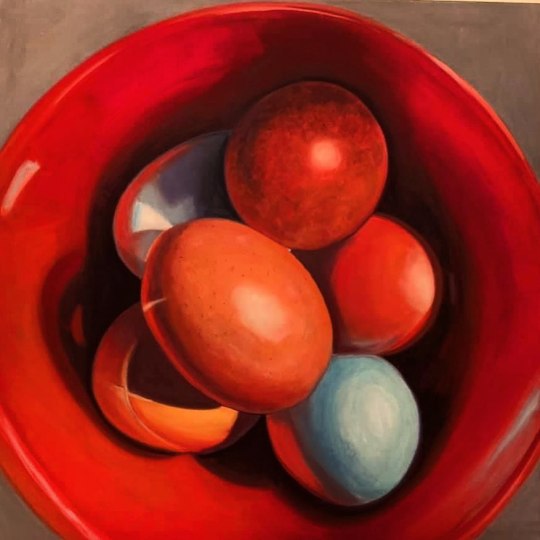#heritageeggs
Photo

FBF 2018 “Farm Fresh” oil on canvas, 30x30” . . . #oiloncanvas#oilpainting#eggs#heritageeggs https://www.instagram.com/p/CO4HZ_3jZct/?igshid=1oywgbwc52xl6
4 notes
·
View notes
Photo

From Gastroposter Britton Nicol, via Instagram:
Eggs from the farmers' market. I'll admit it, I paid more for these ones because I wanted the blue egg.
#farmtotable#blue#organic#eggs#instafood#delicious#gastropost#pastureraised#heritage#instaeat#yum#heritageeggs#turquoisecolor#market#foodstagram#heritagechickens#farmersmarket#foodie#thisbluewaterdropissupposedtobeablueegg#torontofoodie#farmfresh#foodshare#lighteningtheload
2 notes
·
View notes
Photo

Have you seen the #yolk on these #eggs ? They're #orange! #🥚 #🍳 oh and they have #blueeggs too! 😲 . . . #egg #heritageeggs #happyegg #eggfast #breakfast #omlette #eggyolk #notsponsored https://instagr.am/p/CFKUmLln8t0/
1 note
·
View note
Photo

I have been craving brownies all week or weeks?! Decided that I really wanted brownies now...except warm hot out of the oven ones! Couldn't wait for them to cool and ate a square w/ @therealdanprime! Used @duchessbakeshop's recipe (but without white chocolate chips & pecans as I didn't have any). #yeg #yegfood #brownies #brownie #chocolate #warmbrownies #duchessbakeshop #dessert #comfortdesserts #fbcigers #fbciger #yeggers #heritageeggs
#heritageeggs#yegfood#fbcigers#brownies#dessert#comfortdesserts#duchessbakeshop#brownie#yeg#chocolate#yeggers#fbciger#warmbrownies
2 notes
·
View notes
Text
Why Our Hens produce few eggs!

You may have been wondering why our hens produce fewer eggs than the commercial birds. For this week’s blog we will delve into the differences between heritage hens and commercial layers, and see how genetic selection has played a role in the improvement of the modern commercial layer.
A hundred years ago, chickens were raised as dual purpose animals, meaning that they were used for both egg and meat production. The focus changed in the 1940’s; many birds were being raised for either meat or egg production, essentially increasing the output of one specific product from one bird. This was likely influenced by the challenging times associated with war. Over the last fifty years, meat type birds have become larger and have yielded greater amounts of breast muscle. Egg laying birds continued to produce more eggs of consistent size. Many people view the selection of chickens and other animals negatively, yet there are many advantages in selecting for specific traits. With increasing population sizes, selection has enabled for the demand of products, such as eggs and meat, to be satisfied. Efficiency of production and output has increased; uniform body sizes enables farmers and veterinarians to more easily spot birds which are ill.
Selection, however, has had some unintended effects. For instance, a modern day broiler used for meat, grows breast muscle four times larger than forty years ago, in the same amount of time. However, the sizes of the heart and lungs have not increased at the same rate. Since the chickens’ cardiovascular system needs to do extra work to compensate for the larger body weight, the modern chicken is more prone to disease. An extreme example of selecting for only one trait can be seen in turkeys. The breast muscle in turkeys was selected for, to such an extent, that most commercial turkeys are no longer capable of mating naturally. Today, animals are bred on a balanced selection program, where geneticists look at many selection criteria that also maintain animal welfare. Sustaining old animal genetics, as we are doing with our heritage flocks, provides a comparison of the birds of today, and of the past. Heritage breeds also offer a starting point, should something happen to commercial flocks.
That is why, when looking at the egg production graphs, our heritage birds produce less eggs than hens in a commercial setting. It isn’t because they are any less healthy, it is just they haven’t been subjected to the same rigorous selection process for egg production as commercial birds.
1 note
·
View note
